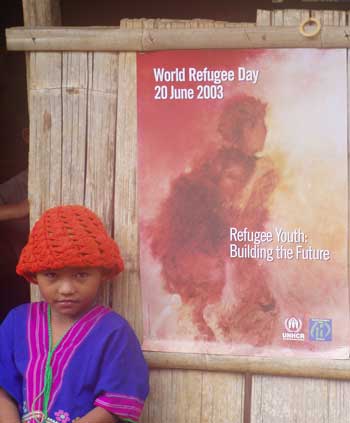REFUGEES
|
Due to the civil war that has been plaguing Burma since 1949 and the oppressive policies of the ruling military regime, there are currently over 150,000 refugees in Thailand, 1-2 million migrant workers in Thailand, and 1-2 million internally displaced people (IDPs) throughout Burma. Included in these figures are more than 134,000 Karen ethnics registered with the United Nation High Commissioner for Refugees (UNHCR) in 7 refugee camps on the Thai-Burma border. These camps have been around since 1982. There are also many refugees from other ethnic groups in Thailand, India and Bangladesh. These people have reluctantly fled their homeland where their villages and fields are routinely being destroyed by the SPDC (Burmese military). Torture and rape are common, as well as forced labor, and many people hide out in the jungle with only the clothes on their backs for months before escaping into Thailand. Most carry nothing with them except the scars left by the ruthless military regime. There are many non-governmental organizations (NGOs) who are working in the refugee camps to better the situation for those who have sought asylym in Thailand. Currently, NGOs are providing medical aid and training, education aid, and some of the basics for life, including bamboo for houses, blankets, some clothing, and mosquito nets. They also provide a ration of rice, salt, cooking oil, chilies, fish paste, yellow beans, and charcoal to refugees. However, the refugees are still hungry for opportunity; there are only a few jobs in the camps, and they are not allowed to leave camp for work or school. The highest level in camp schools is 10th grade, and many students are very eager to continue. The NGOs are working very hard to improve the education level. The hope of the people is that peace will reign in the country of Burma so that they will be able to return to their homes to live in a place where their rights are respected and upheld. |
